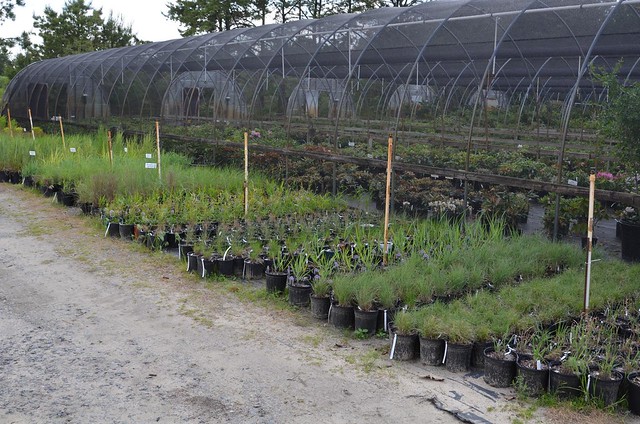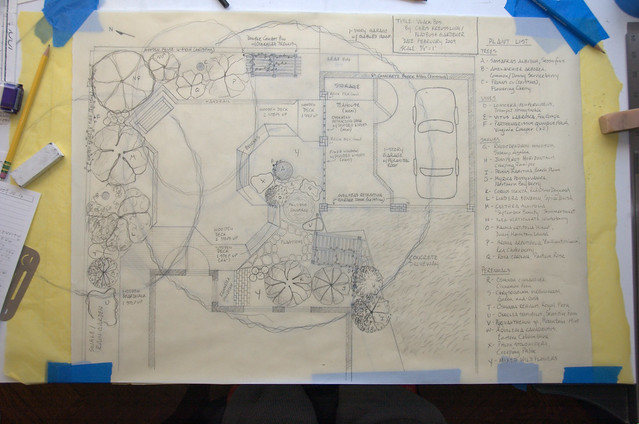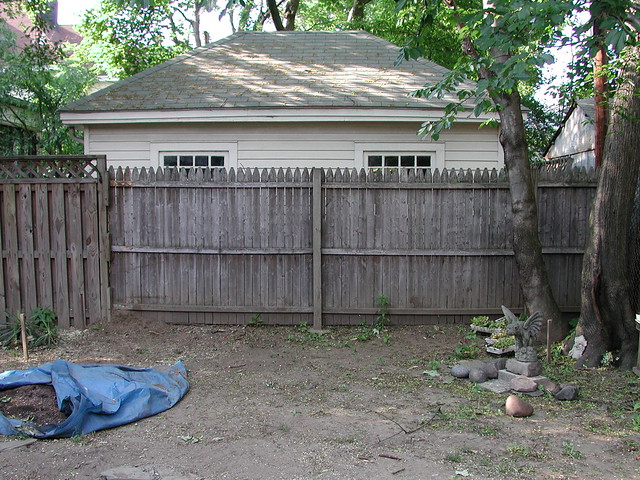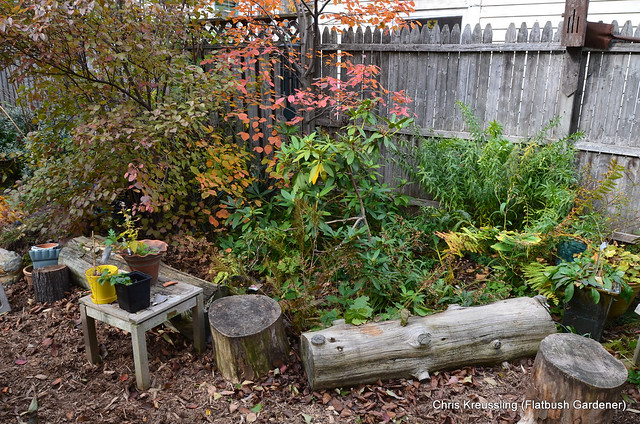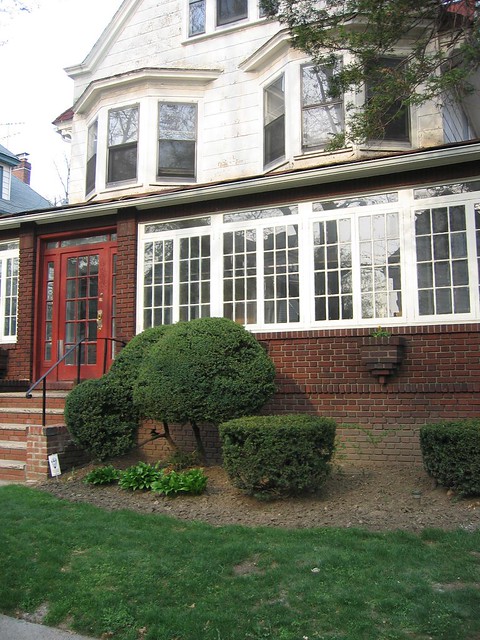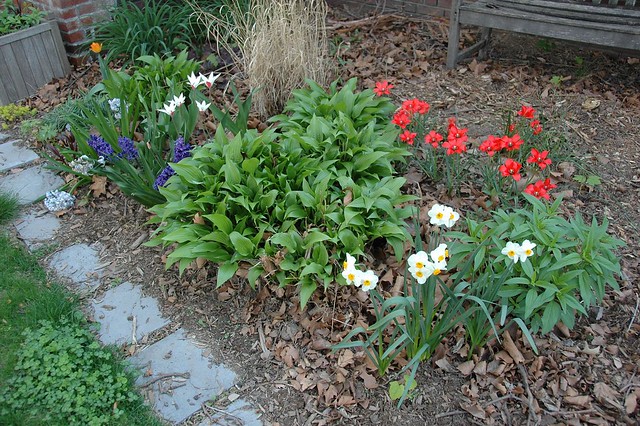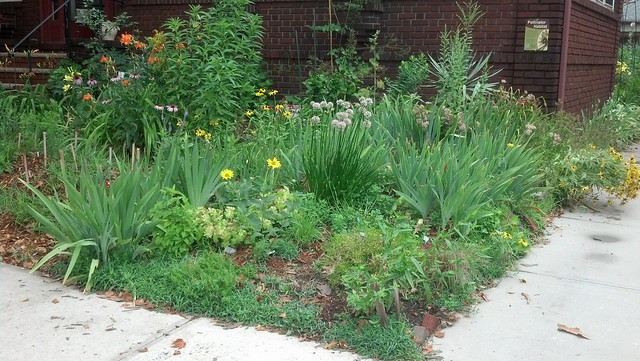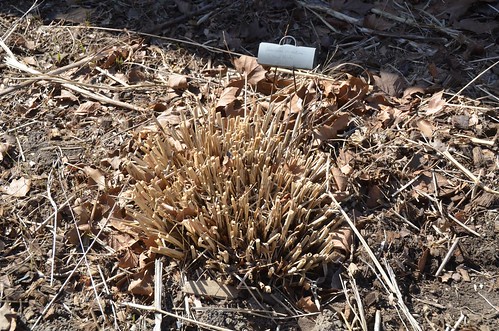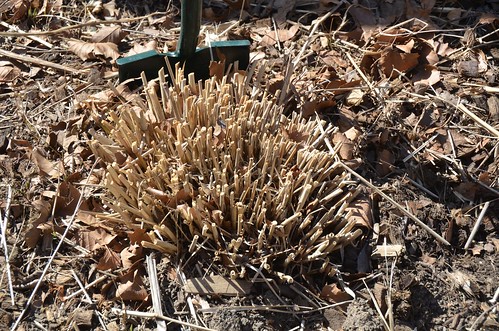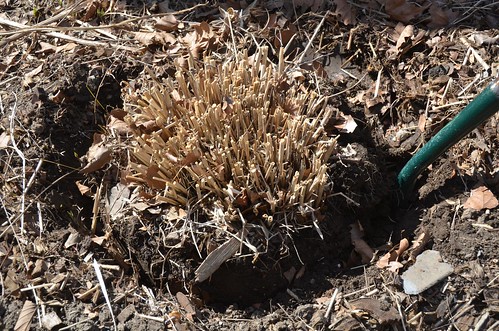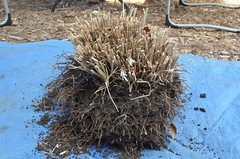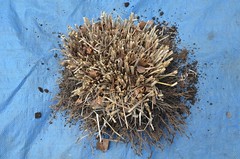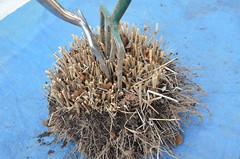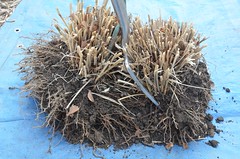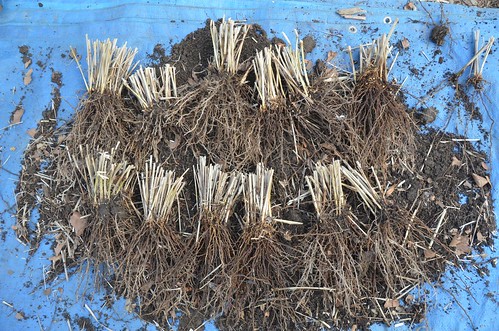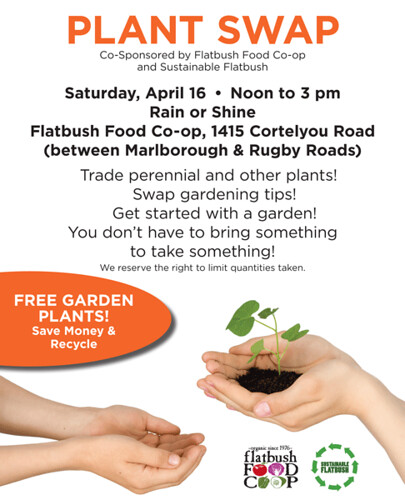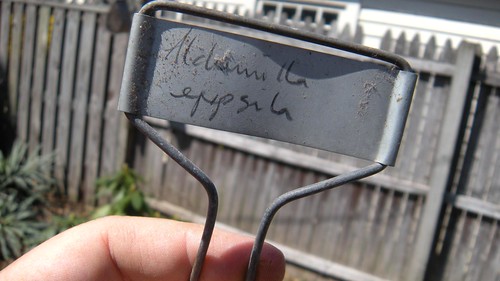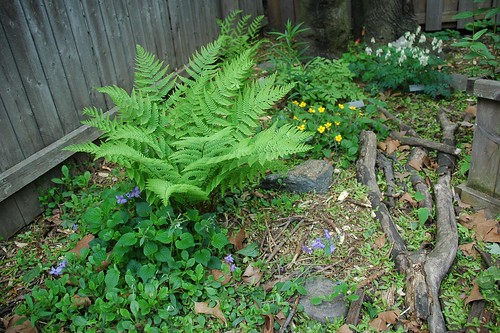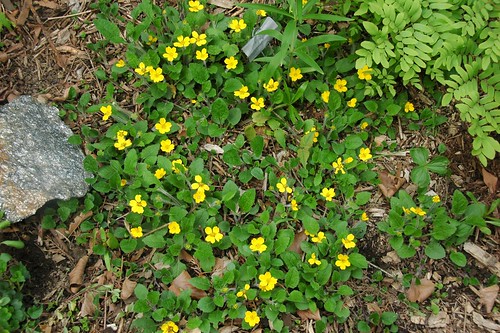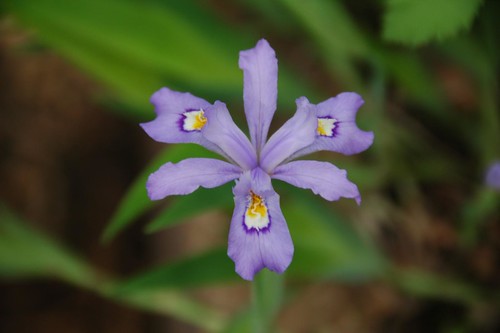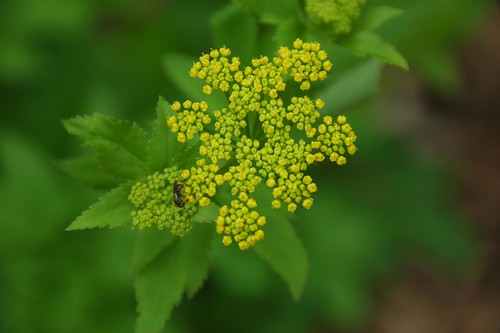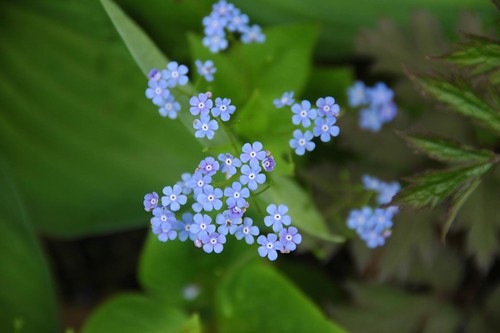Local ecotypes – propagated from local sources by the Staten Island Greenbelt – for sale by Oak Grove Farms (now Nature’s Healing Farm) at the Union Square Greenmarket during the first annual NYC Wildflower Week in 2008. I bought one of each; two years later, all are thriving in my backyard native plant garden.

Earlier this week, the Brooklyn Botanic Garden issued a press release summarizing findings from 20 years of research through their New York Metropolitan Flora Project (NYMF). The results are not surprising, but disheartening nevertheless:
At least 50 varieties of native plants are locally extinct or nearing elimination, say project scientists. Nuttall’s mudflower (Micranthemum micranthemoides), last collected from the region in 1918, is likely extinct throughout its former range. Scarlet Indian paintbrush (Castilleja coccinea), pennywort (Obolaria virginica), sidebells wintergreen (Orthilia secunda), and sundial lupine (Lupinus perennis) are among the wildflower species to have seriously declined in the region. Black crowberry (Empetrum nigrum) is locally extinct, without a trace of a population remaining today in the New York City metropolitan area.
– Some Plants Native to NYC Area Have Become Locally Extinct As New Flora Has Moved In, Finds Brooklyn Botanic Garden, Press Release, 2010-04-05
The story has been widely covered in blogs and other media, including New York Times Science. I’ve included the complete press release below for reference.
I first wrote about NYMF in June of 2006, shortly after I launched this blog, four years ago next month. I’ve written about native plants countless times (see: Native Plant Profiles, Natives). I have a lifelong interest in the nature around me, especially that which is right around me, where I live. Learning about and understanding the ecosystems where I live is part of finding my place in the world. I come to feel this connection deeply. Without it, my life is impoverished, and I am lost.
The greatest threat to native plants, and the ecosystems they support, is habitat loss. The second is competition and displacement, and further habitat loss, from invasive species, whether they be insects, infectious organisms, or other plants. Roughly half of invasive plant species were deliberately introduced, through agriculture, for civil engineering purposes such as erosion control, and for horticultural purposes.
Some plants native to the region, like Britton’s violet (Viola brittoniana), are now rare in their natural habitats but thrive when brought into cultivation in the metropolitan area. Some non-native cultivated plants, such as Japanese barberry (Berberis thunbergii), can escape from cultivated landscapes and overrun natural areas, where they thrive and spread, crowding out more fragile plants.
Choices we make as gardeners affect the future of regional and local biodiversity. I’ve chosen to gradually transform the dust bowl that was our backyard when we moved into our home in the Spring of 2005:
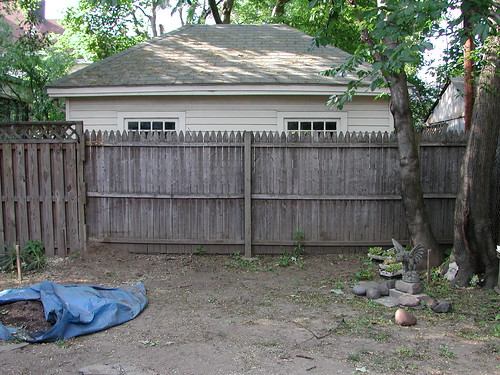
into a native plant garden:



I’ve been rewarded with visits from dozens of other natives: bees and other pollinators, birds, even raccoons and opposums. (I still long for some native reptiles!) Although our local biodiversity is threatened, it is far from lost. If only we create a home for it, it can still find us.
The place name “Flatbush” originates with the old Dutch “vlacke bos”: the wooded plain. As I continue the transformation of this garden – this guided succession from dusty, barren wasteland to a small patch of forest – I am reconnecting with the genius loci, the spirit of the place. In this process, my spirit also finds a place, a home, in the woods I recreate.
Press Release
Brooklyn, NY — Brooklyn Botanic Garden (BBG) announces findings from the most comprehensive study of plant biodiversity ever undertaken in the metropolitan New York area.
New York Metropolitan Flora Project (NYMF) data, gathered over the course of the last 20 years, provide the first hard evidence of how native species are faring—and how non-native species are spreading—in counties within a 50-mile radius of New York City. The area of study includes all of Long Island, southeastern New York State, northern New Jersey, and Fairfield County, Connecticut.
While much of the botanical science community concentrates on researching and tracking the threats to biodiversity in the tropics, scientists at BBG have chosen to undertake an unprecedented study of their own region.
At least 50 varieties of native plants are locally extinct or nearing elimination, say project scientists. Nuttall’s mudflower (Micranthemum micranthemoides), last collected from the region in 1918, is likely extinct throughout its former range. Scarlet Indian paintbrush (Castilleja coccinea), pennywort (Obolaria virginica), sidebells wintergreen (Orthilia secunda), and sundial lupine (Lupinus perennis) are among the wildflower species to have seriously declined in the region. Black crowberry (Empetrum nigrum) is locally extinct, without a trace of a population remaining today in the New York City metropolitan area.
“In many areas, the snapshot this report provides is startlingly different from the printed maps, plant manuals, and landscape shots of just 40 years ago,” says Dr. Gerry Moore, director of Science at Brooklyn Botanic Garden and coordinator of the New York Metropolitan Flora Project. “A number of invasive species introduced from distant areas that have climates similar to ours—such as parts of Asia, Europe, and the southeastern United States—are newly thriving in the New York City area. For example, camphor weed, native to the southern United States, is common in Brooklyn now; however, at the time of the Garden’s founding a century ago, it was considered to be quite rare.”
Offering a precise map of as many as 3,000 plant species, the NYMF project findings are vital reference points for those involved in environmental efforts like conserving rare plants, planning parks and greenways, repairing degraded habitats, and designing home gardens.
Although agencies and municipalities may wish to restore native species to particular habitats, the NYMF findings suggest that some native species can no longer survive in their native region. “How do you, say, restore the flora original to a coastline, when you know that the sea level is rising each year?” asks Dr. Moore.
Some plants native to the region, like Britton’s violet (Viola brittoniana), are now rare in their natural habitats but thrive when brought into cultivation in the metropolitan area. Some non-native cultivated plants, such as Japanese barberry (Berberis thunbergii), can escape from cultivated landscapes and overrun natural areas, where they thrive and spread, crowding out more fragile plants. Efforts are now underway to better recognize and manage for invasive plant species, which can be particularly disruptive when introduced to a new habitat due to the absence of the insects, diseases, and animals that naturally keep its population in check in its native region.
Dr. Moore notes that changes to plant biodiversity also affect insect and animal life, as well as other aspects of the local ecosystem.
The mapping phase of the NYMF project is now concluding, and steps are underway to create manuals in collaboration with the U.S. Forest Service.
“The NYMF project is a model, not only for gathering data over time, but for applying that data in a precise and visually-oriented way,” says Scot Medbury, president of Brooklyn Botanic Garden, who notes that data from the research project will be shared with Federal and State governments, as well as the New York Flora Atlas, published in partnership with the state’s Biodiversity Research Institute. “Studying the vegetation changes in highly populated areas is critical to understanding the future of biodiversity in our rapidly urbanizing world,” Medbury notes.
The study of native plants has long been a core mission at Brooklyn Botanic Garden, which celebrates its centennial this year. In BBG’s early years, botanist Norman Taylor intensively studied local flora by walking nearly 2,000 miles over Long Island, mapping locations of plant families. Taylor then published a book on flora of the region, providing as clear a picture as was possible at the time of the state of native flora.
Today, many new plants are present in the area. Some have been intentionally cultivated, while others have moved here inadvertently: brought in with soil, animals or people. “NYMF has identified entire plant communities that would have been unknown to Norman Taylor and his colleagues a hundred years ago,” says Medbury.
[goog.gl]
Related Content
Local ecotypes available from Oak Grove Farms, 2008-05-11
Growing a Native Plant Garden in a Flatbush Backyard, 2007-08-06
Web Resource: New York Metropolitan Flora Project (NYMF), 2006-06-02
Links
Some Plants Native to NYC Area Have Become Locally Extinct As New Flora Has Moved In, Press Release, Brooklyn Botanic Garden, 2010-04-05
Go Native, BBG
Staten Island Greenbelt
Nature’s Healing Farm (previously Oak Grove Farms)
NYC Wildflower Week
Natural Resources Group, NYC Department of Parks and Recreation
Torrey Botanical Society
After a 20-Year Mapping Effort, Hoping to Save Dozens of Native Plants, New York Times, 2010-04-02
